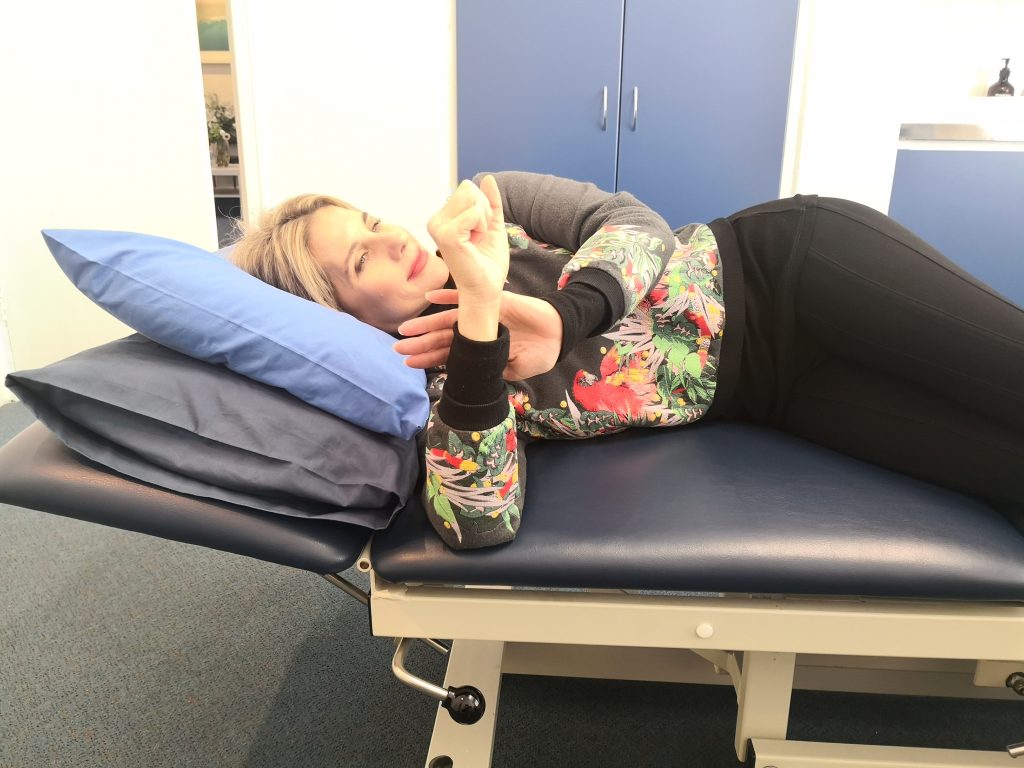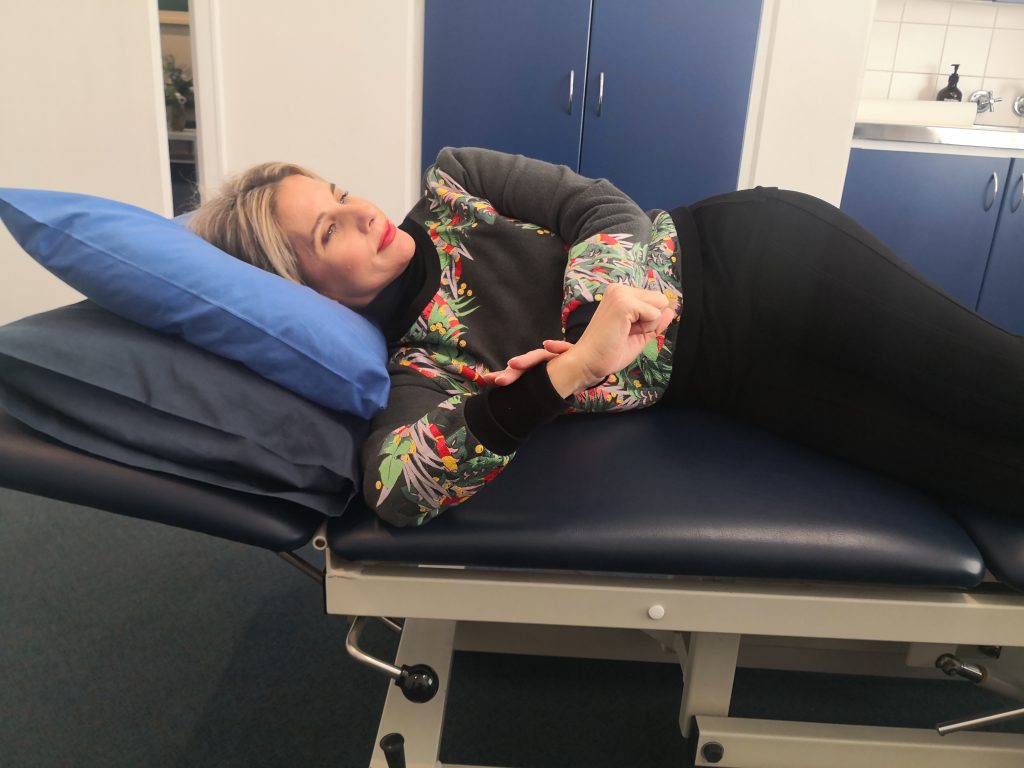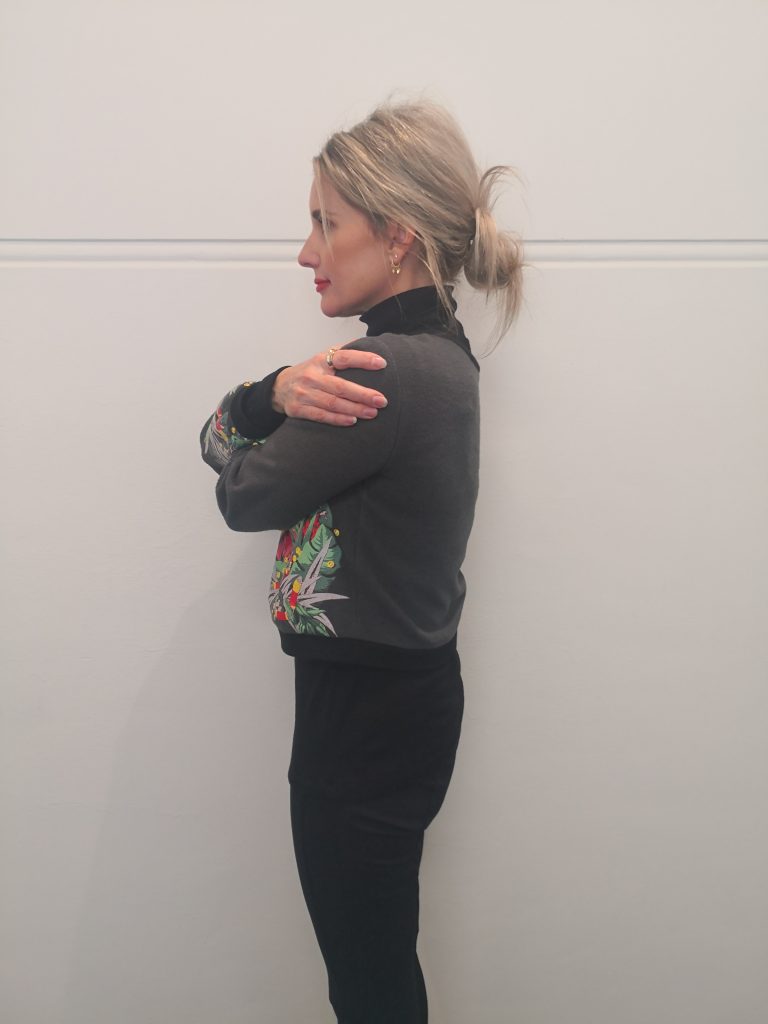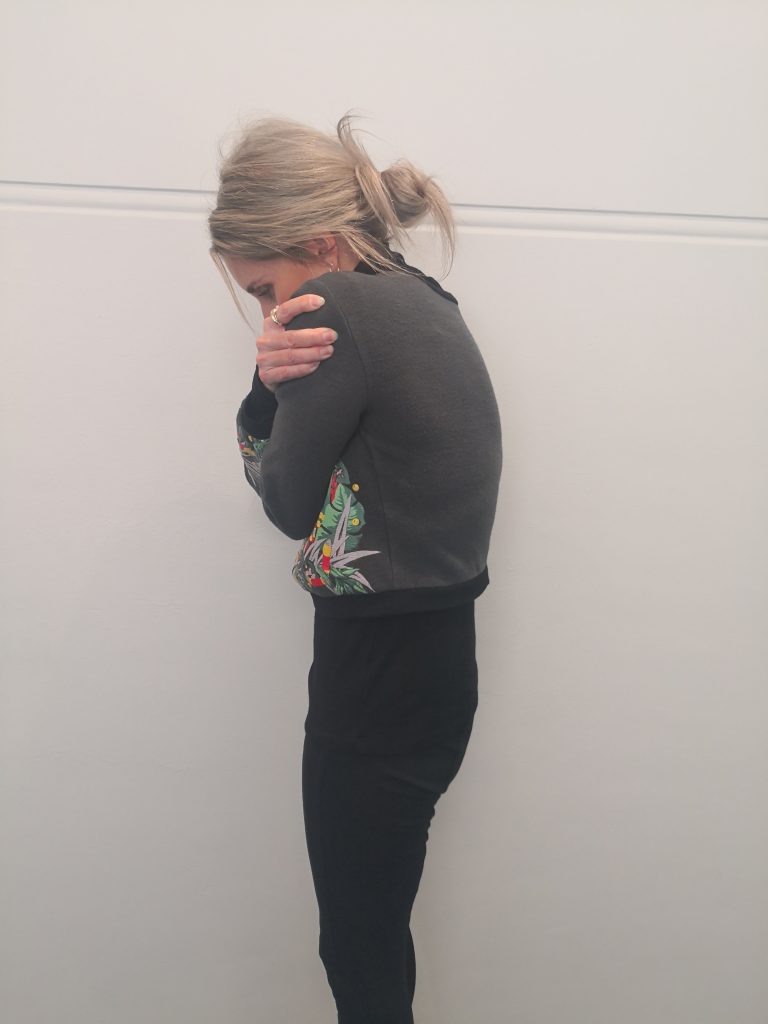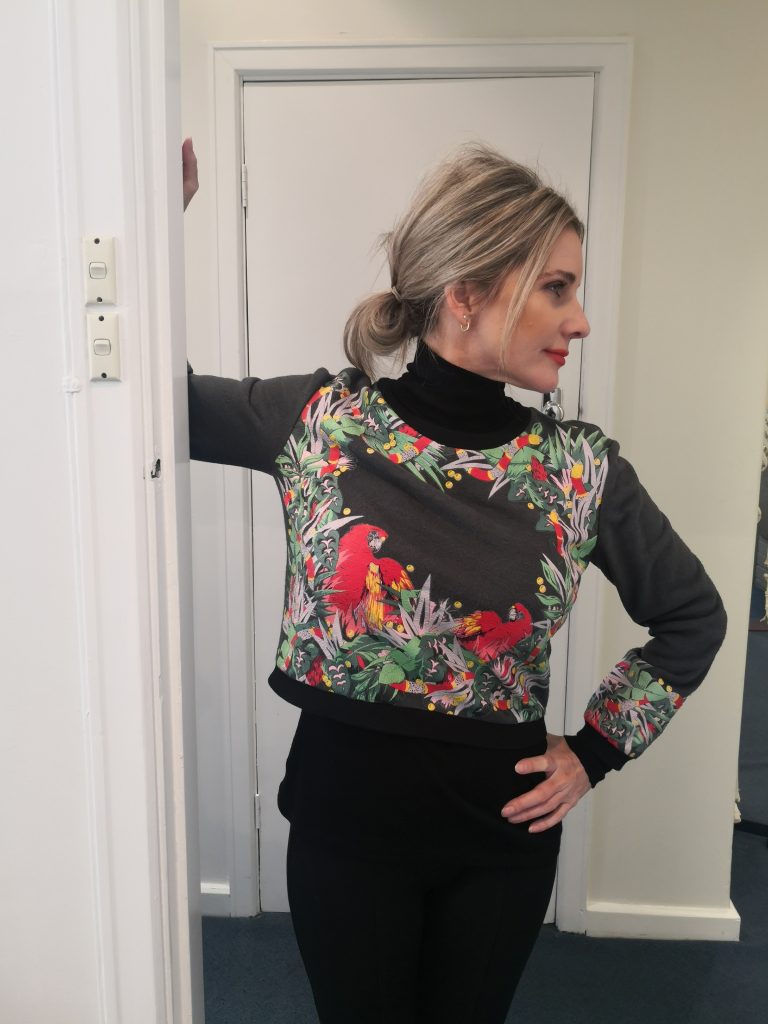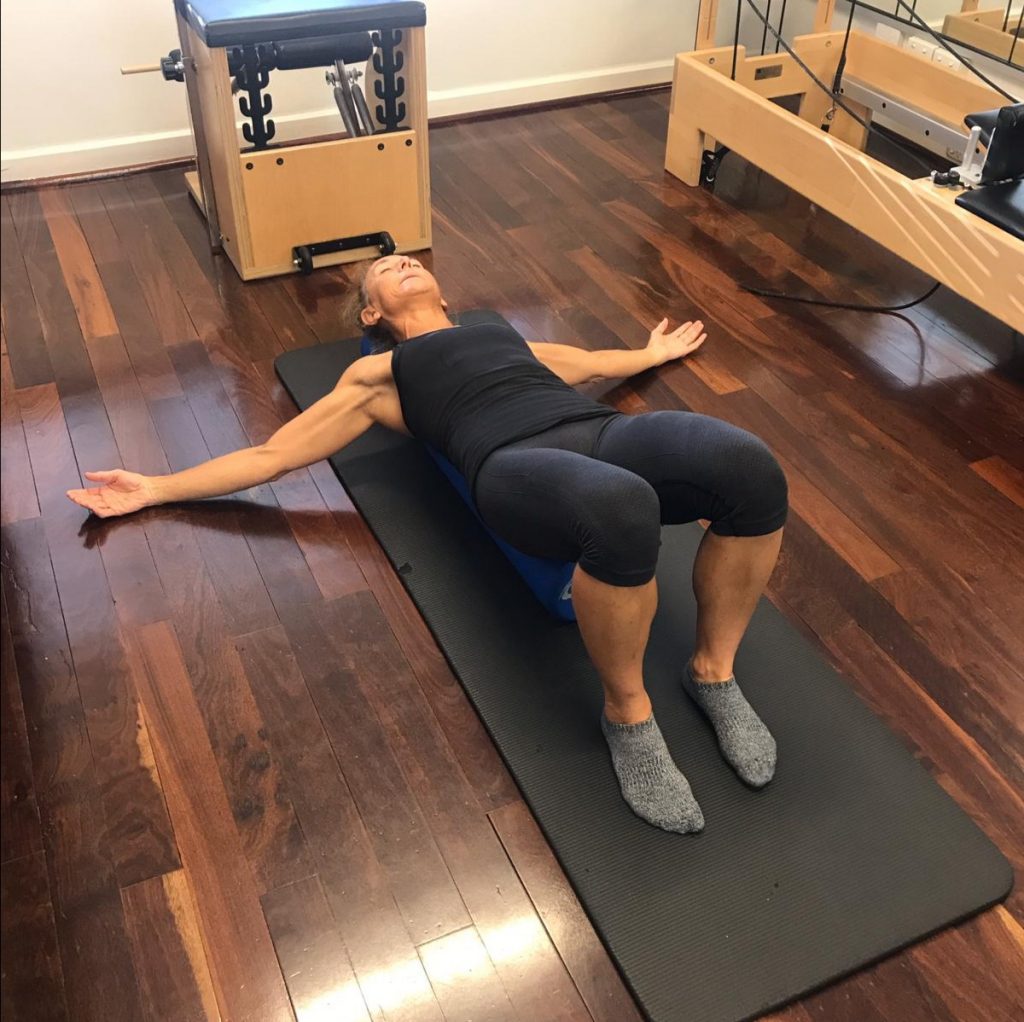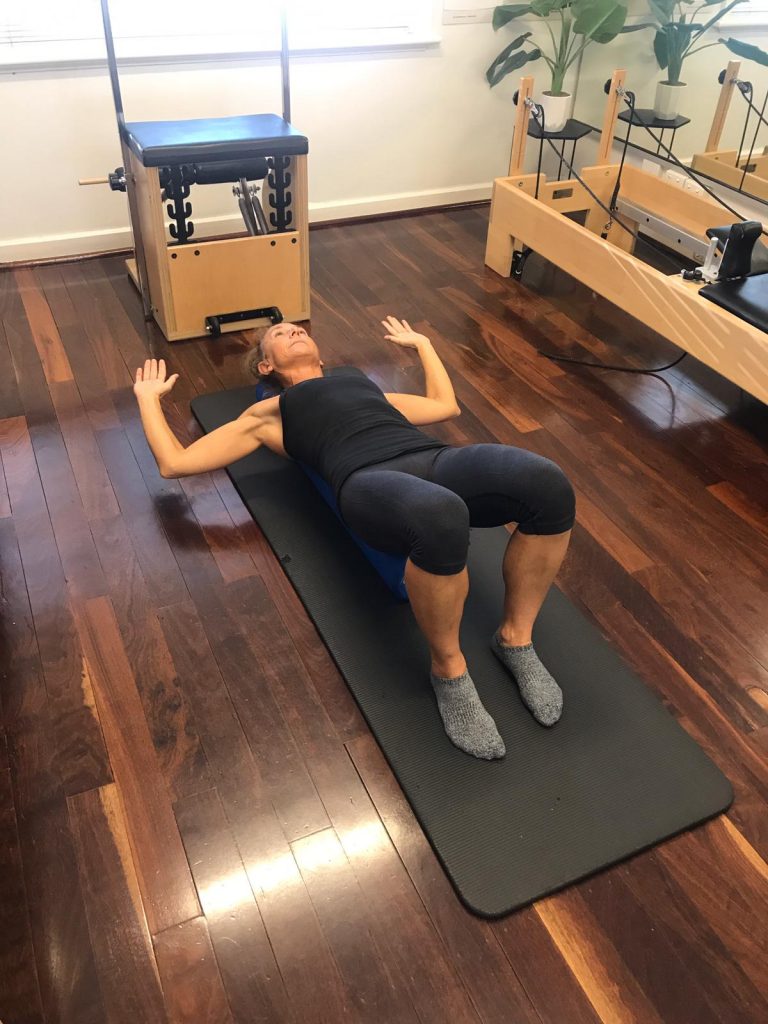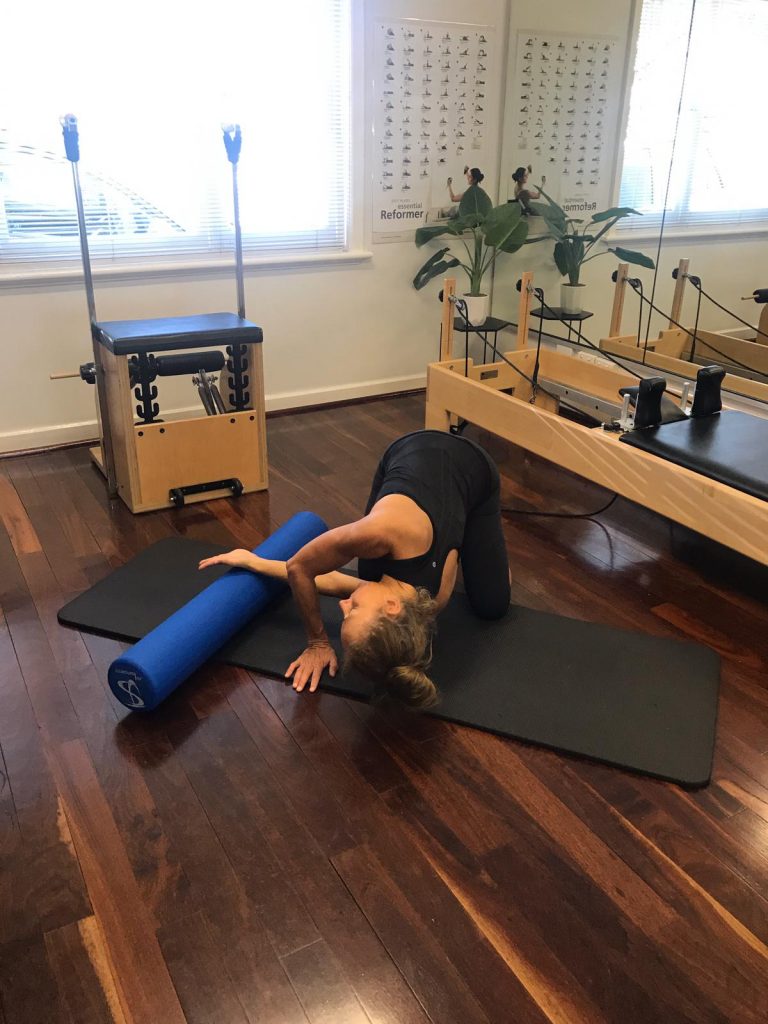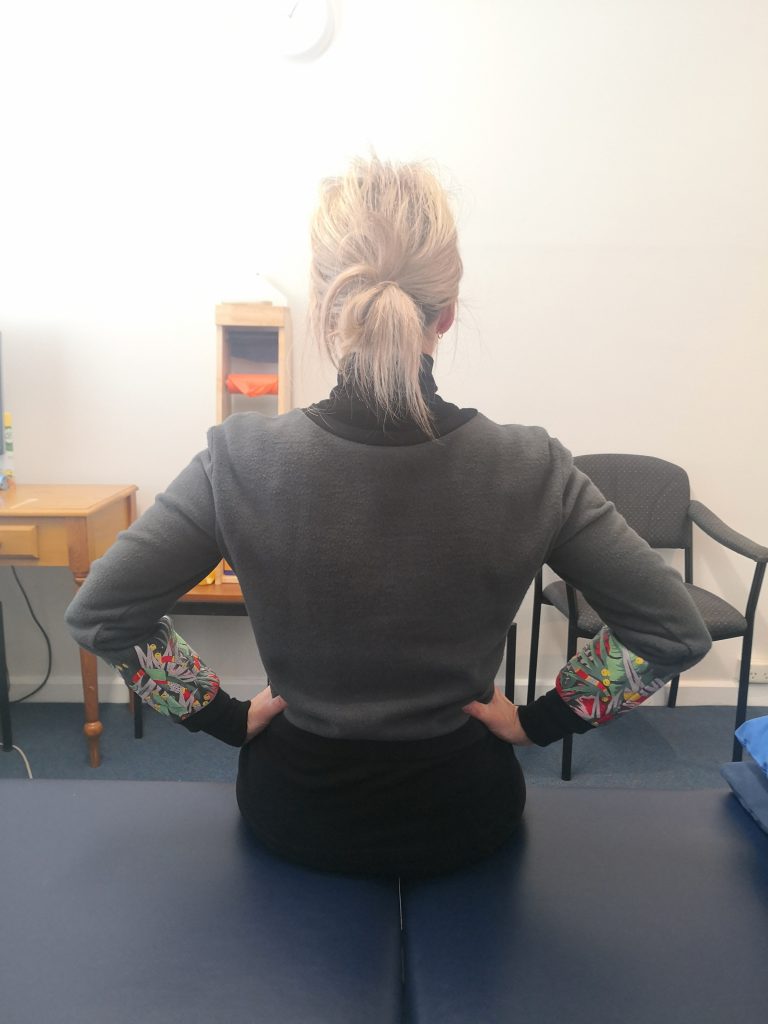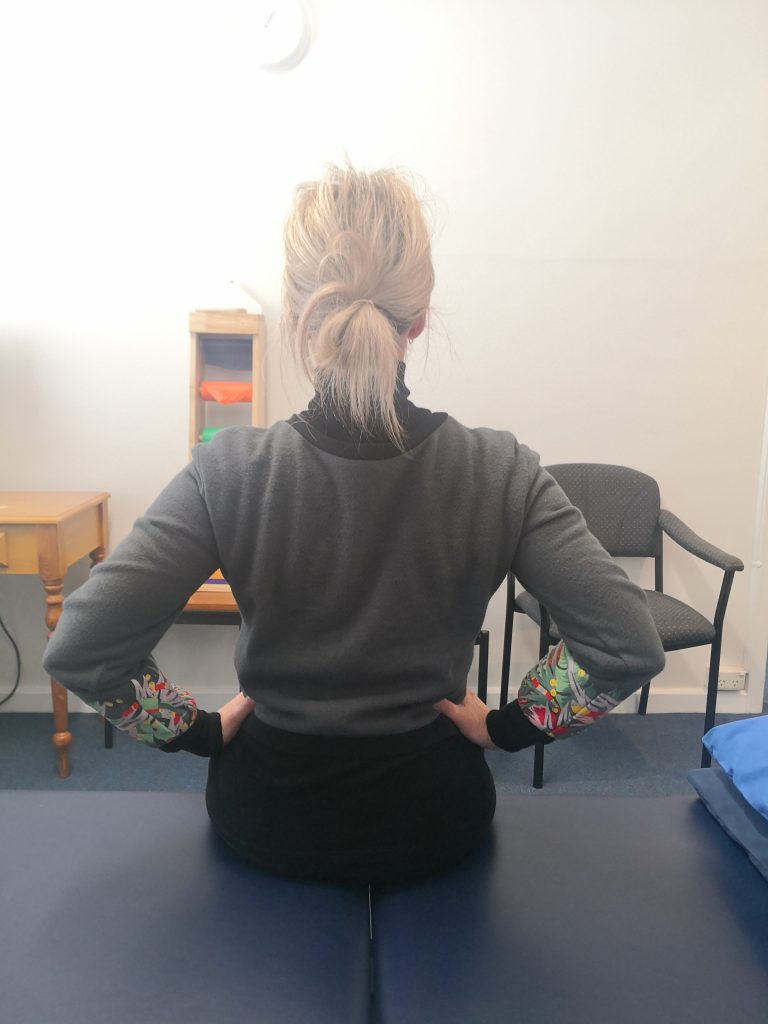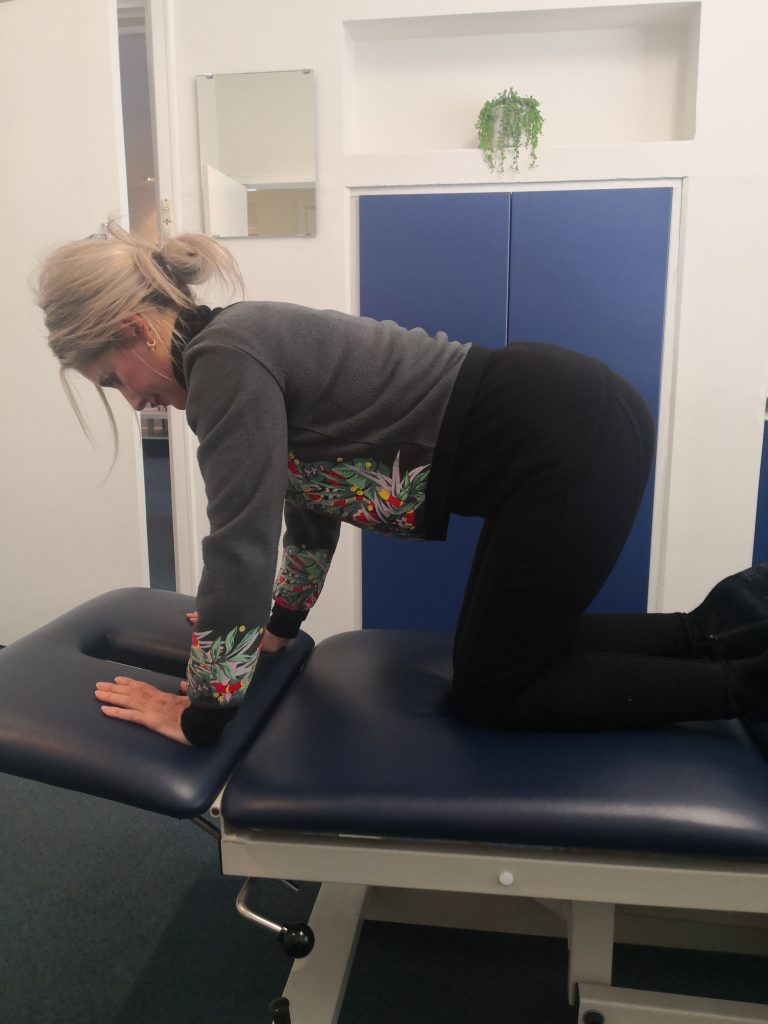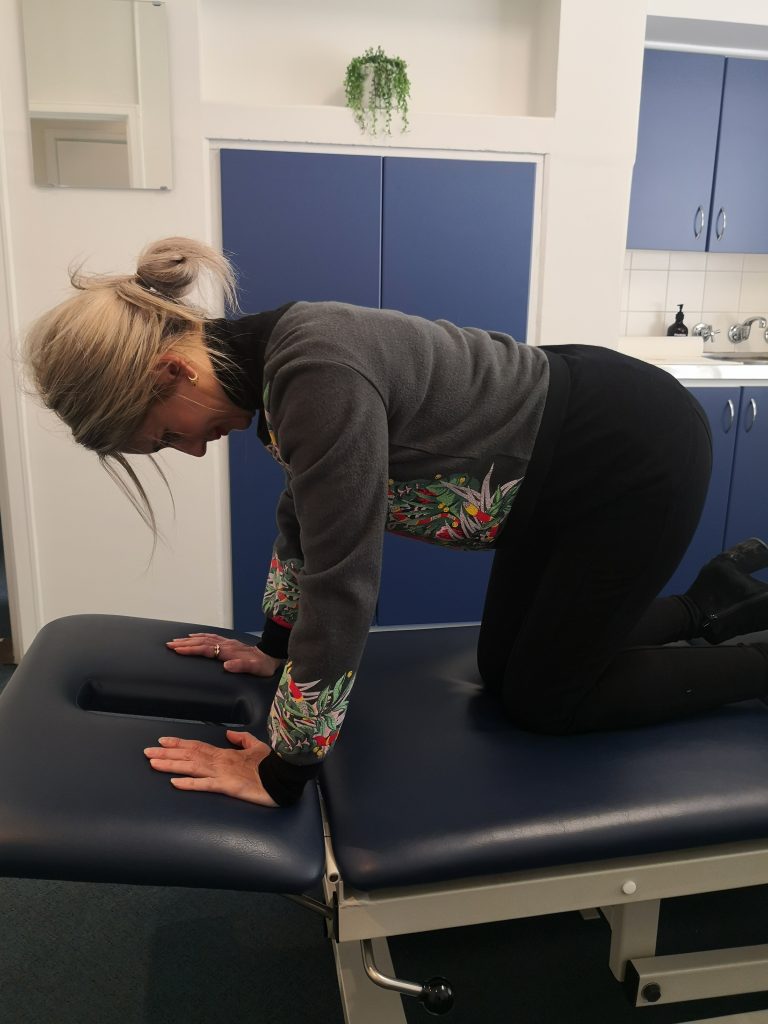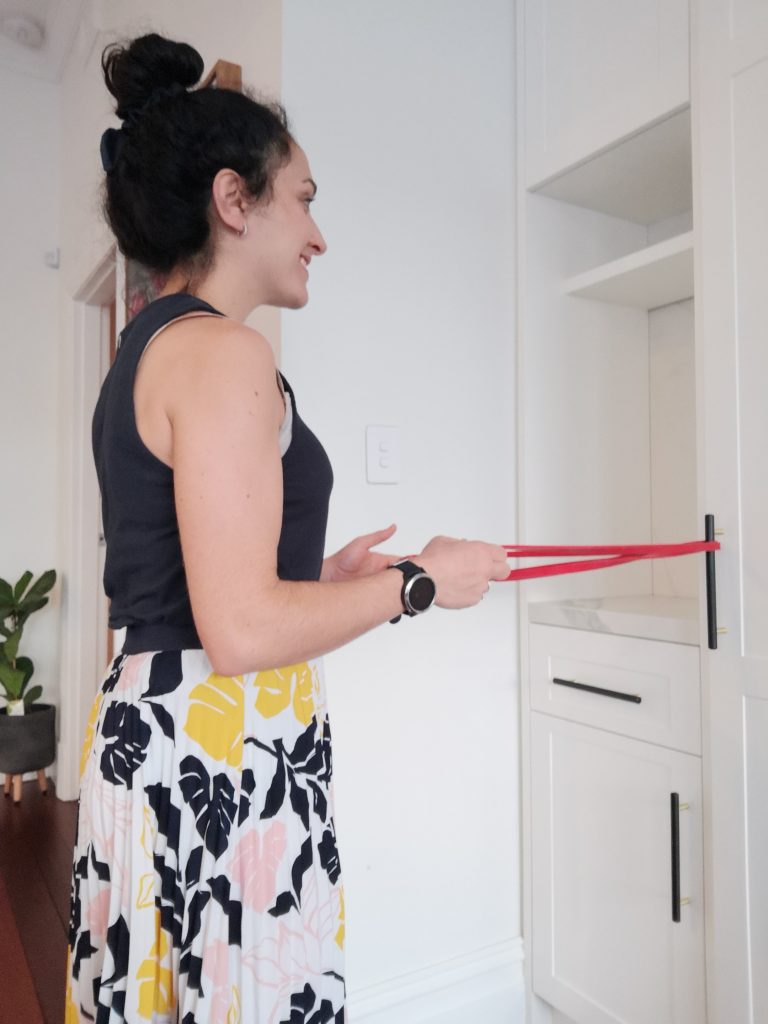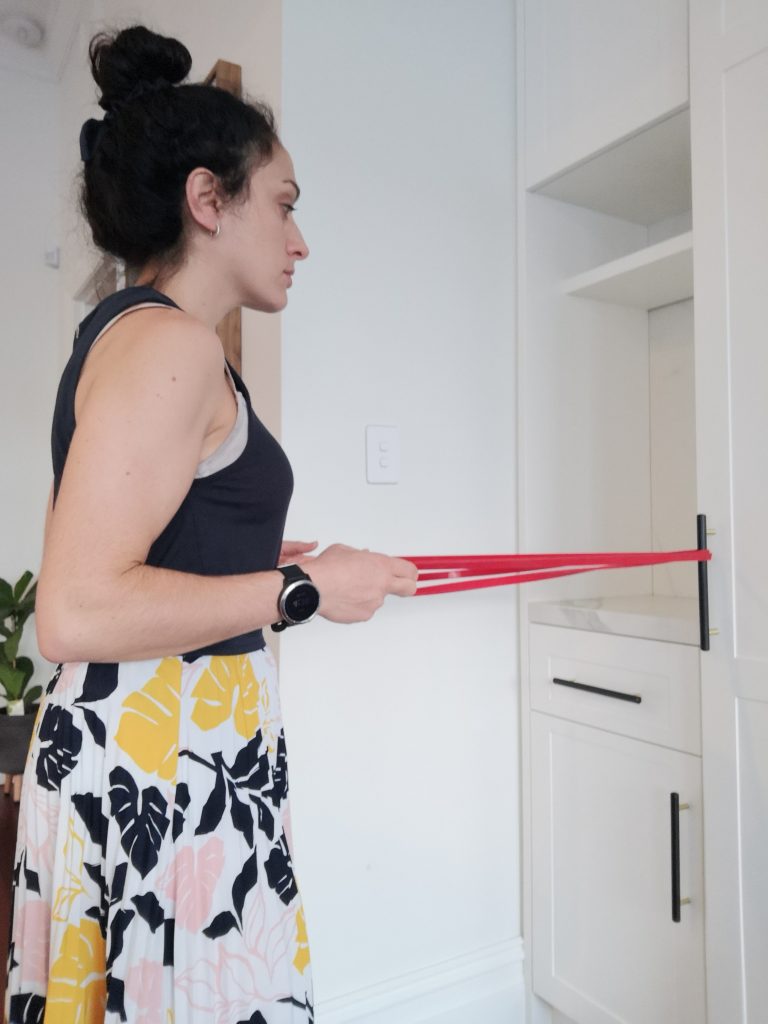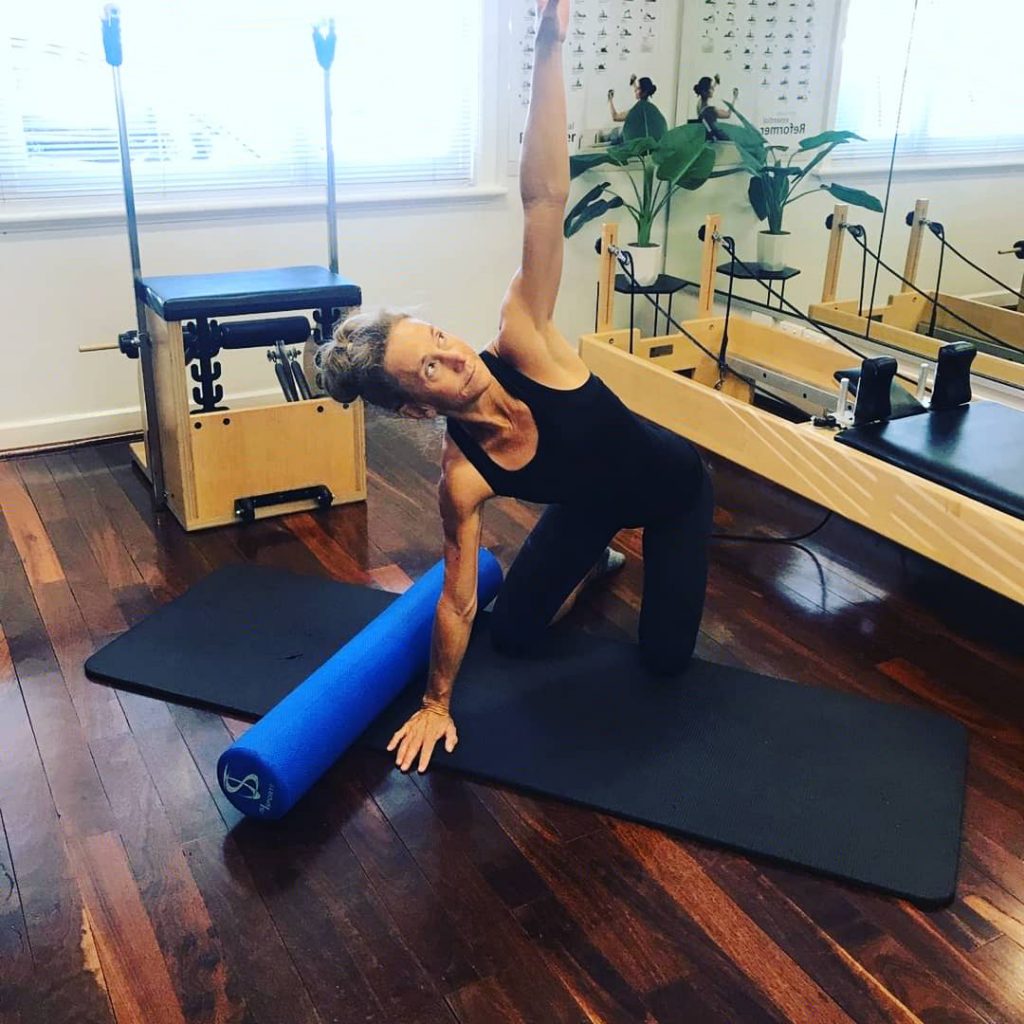
In part one of our blog regarding neck pain, we touched on how you can activity manage, reduce and prevent neck pain in regards to sleep posture, ergonomics and exercising.
In part two, we will look into some basic stretches, postures and exercises that you can look to, to help with managing and reducing your neck pain.
As previously mentioned, it is always best to consult with your GP or Physiotherapist for any neck pain that has been prolonged, intense and involved an alteration in the sensation and muscle strength in your face and upper body.
When in the midst of an acute bout of neck pain, some of the following exercises may feel too intense or sore, it is important that you persist through tightness and stiffness that responds well to the exercises, but aim to not push beyond a 3/10 pain or when you feel the exercises, over two to three attempts, are making your pain worse.
STRETCH
Posterior Capsule
Lie on your side with your head well supported on a pillow. Raise you bottom arm up so that the elbow is in line with the shoulder (the elbow must remain at this level for the entire time). Place your palm down and place the top hand on the back of the wrist of the bottom arm. Keeping your elbow at shoulder height, gently press your forearm into the bed, eliciting a stretch through the back of the shoulder of the bottom arm. Hold for 20 seconds and repeat three times. If you feel pain in the front of the shoulder instead of the back, please cease the exercise.
Upper Trapezius
Sit or stand with one arm on your lower back and the other hand on the side of your head. Gentle allow the weight of hand to lower your head down to the opposite shoulder. Feeling the stretch on the lengthened side of the shoulder and neck. Hold for 20 seconds and repeat three times. Repeat on the other side if necessary.
Rhomboids
Sit or stand with your arms by your sides. Then interlock your elbows in front of you and place your arms across your body, grapsing onto the front of the opposite shoulder, whilst slumping forwards and rounding your shoulder and upper body forward until you feel a moderate stretch between your shoulder blades. Hold for 20 seconds and repeat three times.
Pecs
Stand with your affected side closest to the edge of a wall or door frame. Slide your forearm down the wall until your elbow is at shoulder height.
Keeping your forearm on the wall, rotate your chest away from your arm until you feel a moderate stretch across your chest.
Keep the top of the shoulders relaxed and your breath smooth.
Hold this position fpr 20 seconds and repeat up to three times.
MOBILISE
Cervical Rotation
Thoracic and Chest
Utilising a foam roller can be a great way to mobilise and release both the thoracic spine and the chest muscles, as tightness in these areas can impact on the alignment and placement of your head and neck. Foam roller exercises can be performed up to three time per day if required.

Crucifix stretch 
Surrender stretch 
Nedle and thread down 
Needle and thread up
STRENGTHEN
Shoulder setting
Start in an upright and neutral position.
Focus on moving your shoulder blades down and back (as if they are a pair of curtins closing).
Gently draw your shoulder blades back towards the hip on the opposite side.
This is a subtle movement, Ensure the tips of your shoulders lie along the same vertical line as the tip of your ear and the tip of your shoulder . Hold for 10 seconds and release. Repeat up to 10 times.
Lower Trapezius
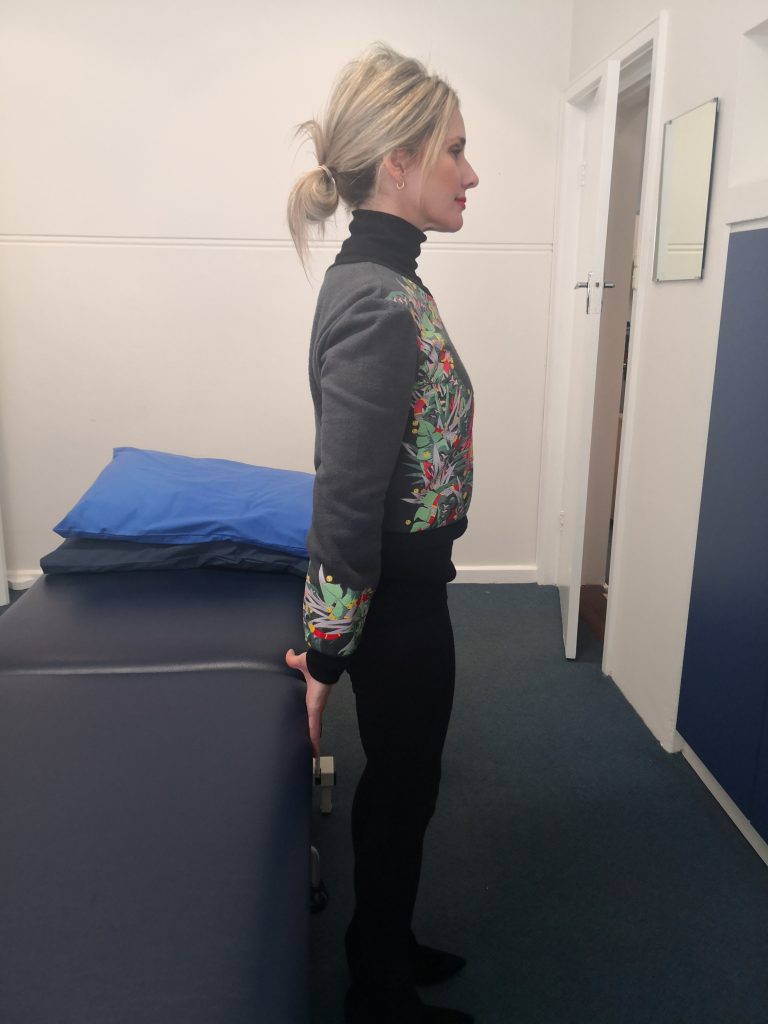
Stand with your back against a wall or table. Allow one foots width between your back and the wall/table. Gently extend one or both arms back from the shoulder joint, keeping your elbow straight. With your palm facing back, gently press your palm against the wall or table with approximately 30% of your strength. Hold this position for five seconds and then relax. repeat up to 10 times without any undue stress t your body. Ensure your lower back stays neutral.
Deep neck flexors
Start on your hands and knees with your hands under your shoulders and knees under your hips. Your elbows should be straight and your knees hip width apart.
Keep your back in neutral and look down between your hands.
Press gently down through your hands and think about gently lifting your ribcage away from the ground.
Gently draw your chin in, creating a double chin and feel the back of your neck lengthening.
Hold this position for five to ten seconds. Repeat for up to 10 times.
Ensure your back and neck remain in the neutral position throughout, with the top of your shoulders relaxed.
Middle trapezius and rhomboids
Tie a resistance band around a solid object and hold the ends in each hand.
Stand on both legs with your feet hips width apart, knees slightly bent and in a relaxed but upright posture.
Bend your elbows and pull the band back, squeezing your shoulder blades together. Keep your elbows bent at roughly 90 degrees the whole time.
Control the movement as you return your hands to the start position. Allow three seconds to pull back and three seconds to return to the start position.
Keep your core drawn in gently and your breath constant.

